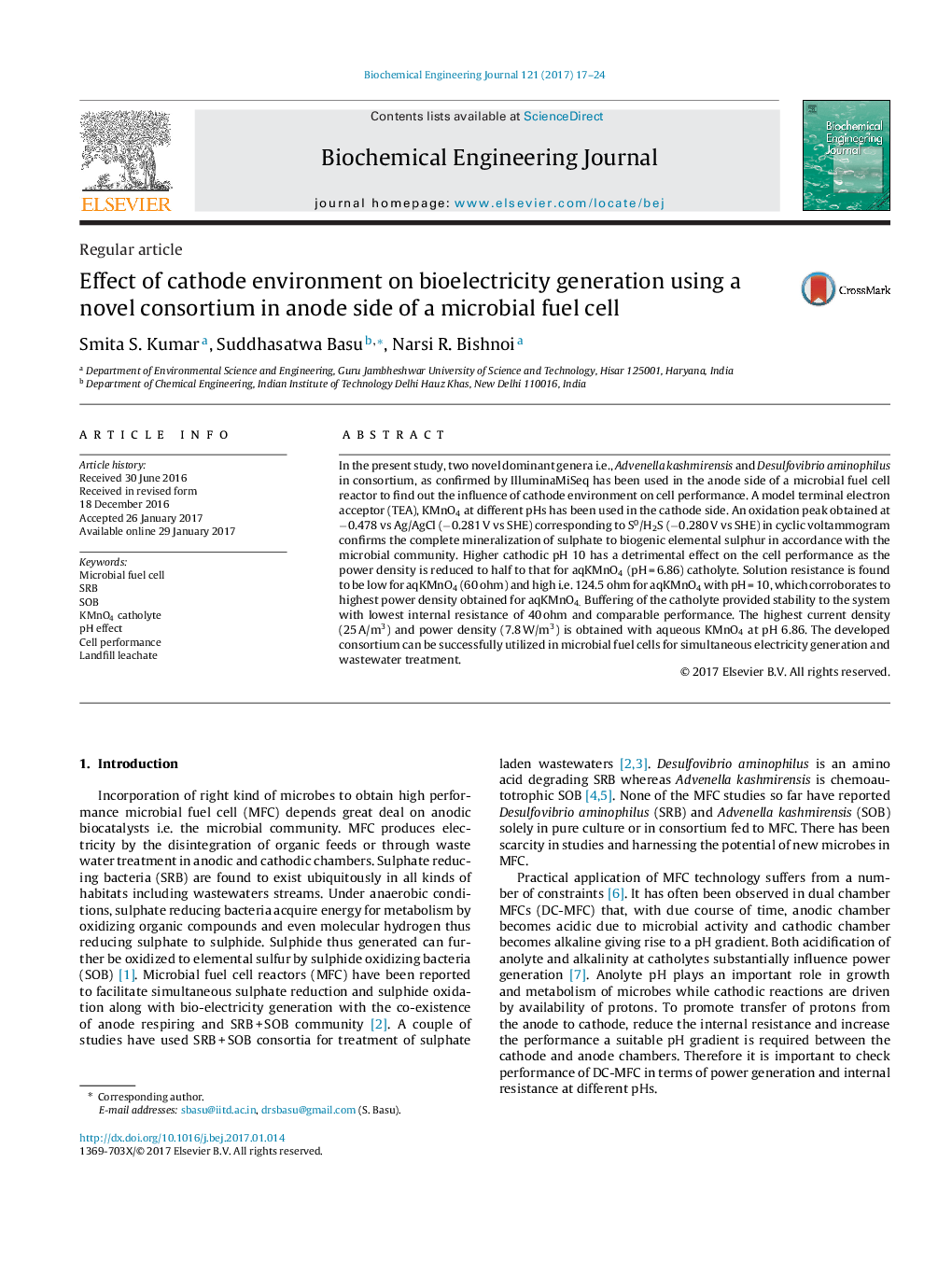| کد مقاله | کد نشریه | سال انتشار | مقاله انگلیسی | نسخه تمام متن |
|---|---|---|---|---|
| 6450373 | 1415994 | 2017 | 8 صفحه PDF | دانلود رایگان |
- Two novel genera, Desulfovibrio aminophilus and Advenella kashmirensis used in microbial reactor.
- Peak for S0/H2S proved complete sulphate conversion to biogenic sulphur.
- Dominant phyla found Bacteroidetes, Cyanobacteria, OP9, Tenericutes, Acidobacteria.
- 0.5Â g/L KMnO4 in 50Â mM PBS solution as catholyte gives OCV 1.178Â V.
- Volumetric power density obtained is 7.8Â Wmâ3 for the consortium.
In the present study, two novel dominant genera i.e., Advenella kashmirensis and Desulfovibrio aminophilus in consortium, as confirmed by IlluminaMiSeq has been used in the anode side of a microbial fuel cell reactor to find out the influence of cathode environment on cell performance. A model terminal electron acceptor (TEA), KMnO4 at different pHs has been used in the cathode side. An oxidation peak obtained at â0.478 vs Ag/AgCl (â0.281Â V vs SHE) corresponding to S0/H2S (â0.280Â V vs SHE) in cyclic voltammogram confirms the complete mineralization of sulphate to biogenic elemental sulphur in accordance with the microbial community. Higher cathodic pH 10 has a detrimental effect on the cell performance as the power density is reduced to half to that for aqKMnO4 (pHÂ =Â 6.86) catholyte. Solution resistance is found to be low for aqKMnO4 (60Â ohm) and high i.e. 124.5Â ohm for aqKMnO4 with pHÂ =Â 10, which corroborates to highest power density obtained for aqKMnO4. Buffering of the catholyte provided stability to the system with lowest internal resistance of 40Â ohm and comparable performance. The highest current density (25Â A/m3) and power density (7.8Â W/m3) is obtained with aqueous KMnO4 at pH 6.86. The developed consortium can be successfully utilized in microbial fuel cells for simultaneous electricity generation and wastewater treatment.
Schematic representation of processes going on in the dual chamber microbial fuel cell fed with novel consortium of sulphate reducing and sulphur oxidising bacteria isolated from Bhalaswa-Delhi Dumpsite259
Journal: Biochemical Engineering Journal - Volume 121, 15 May 2017, Pages 17-24
